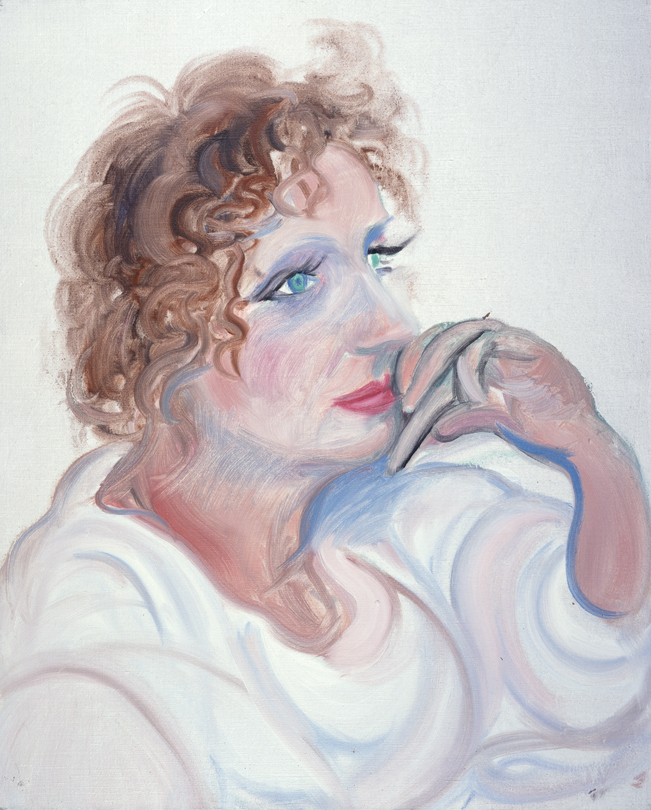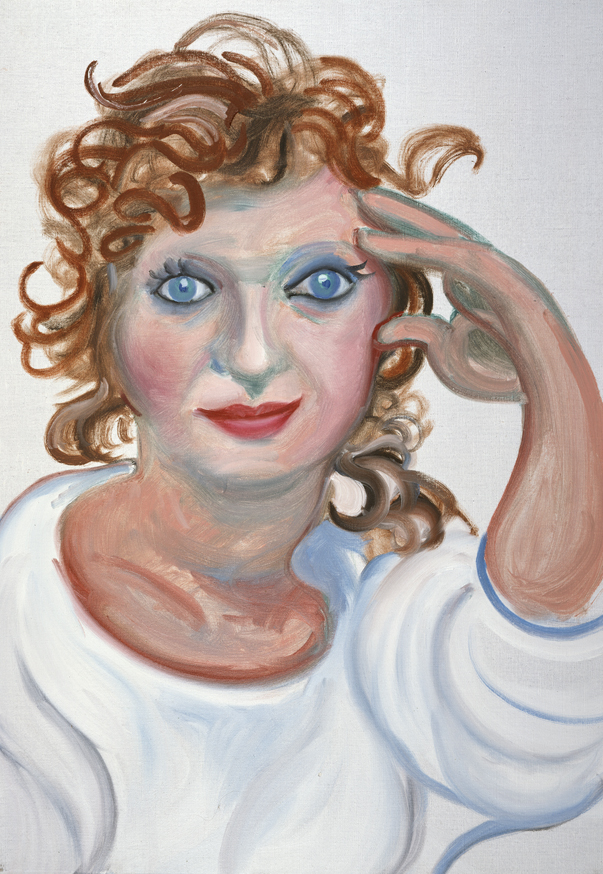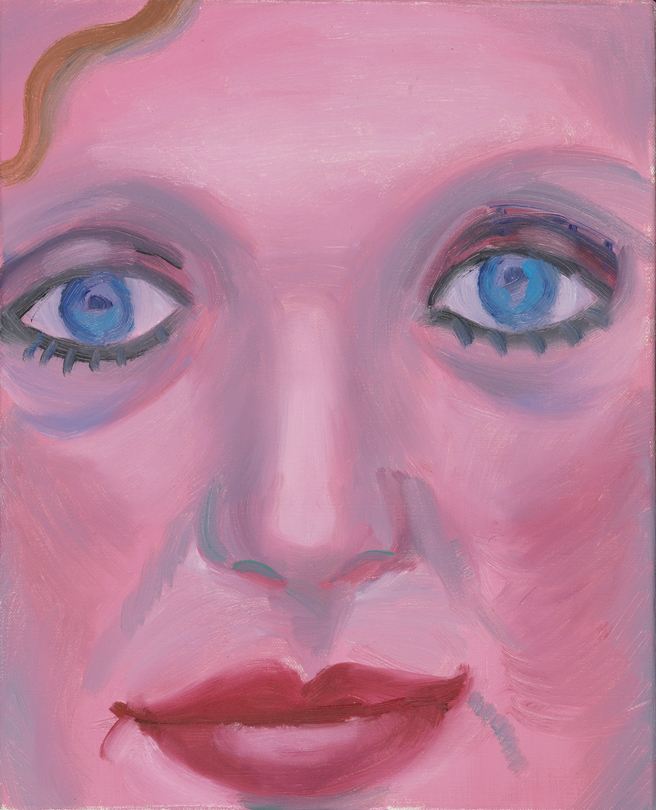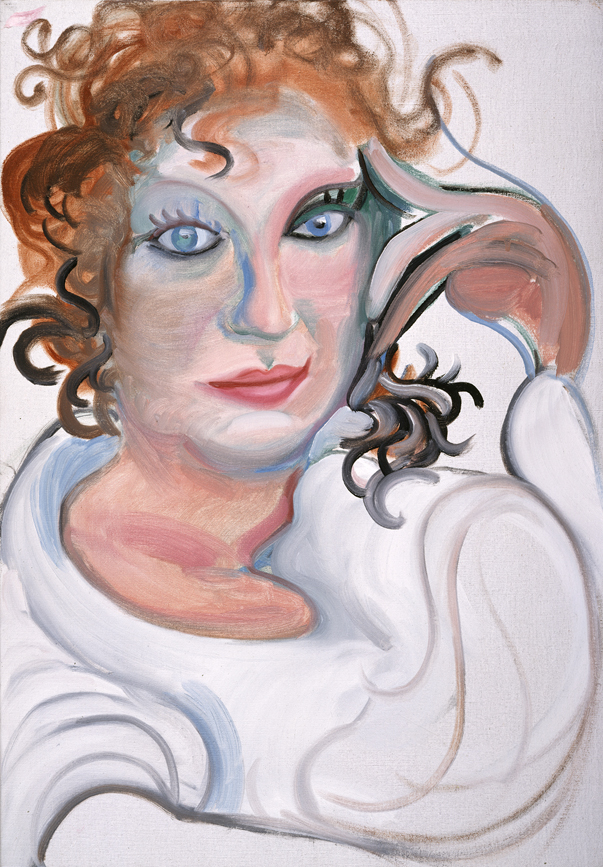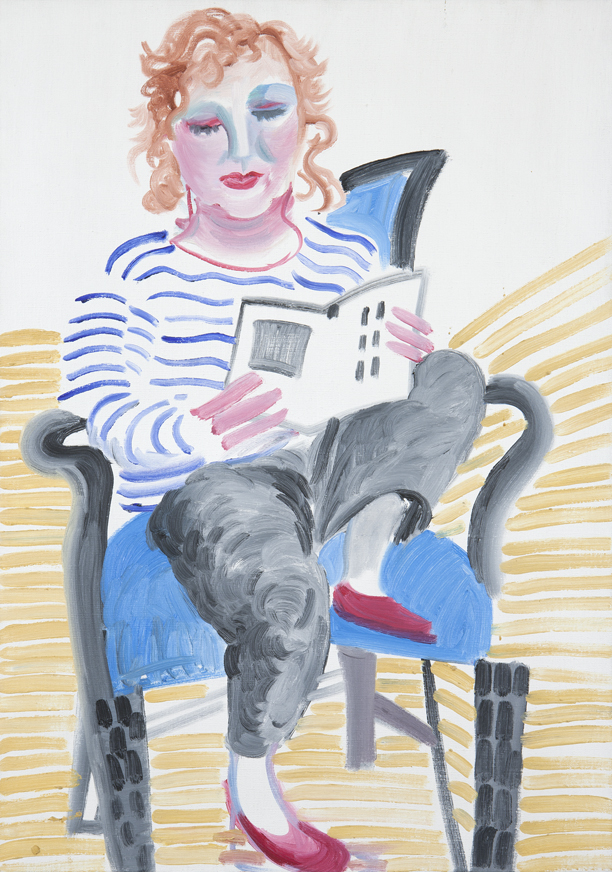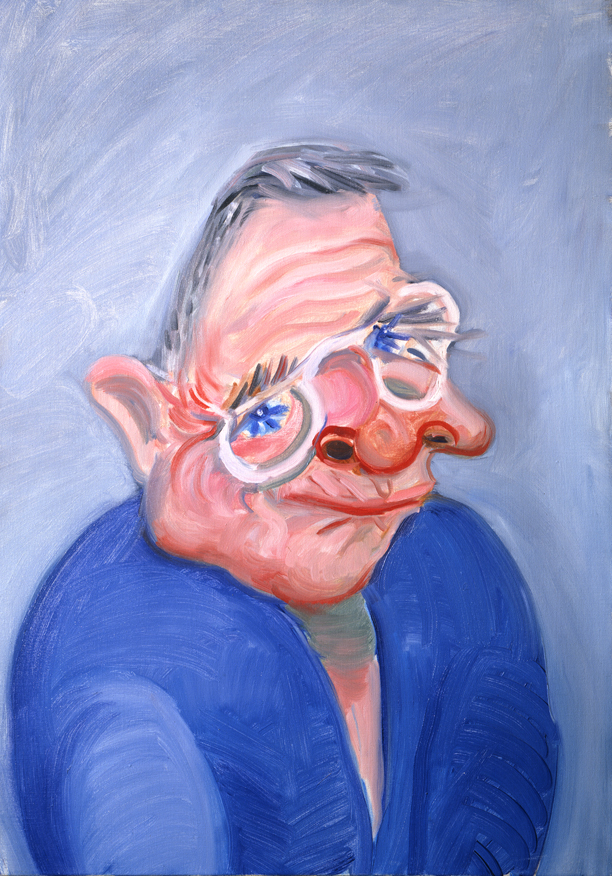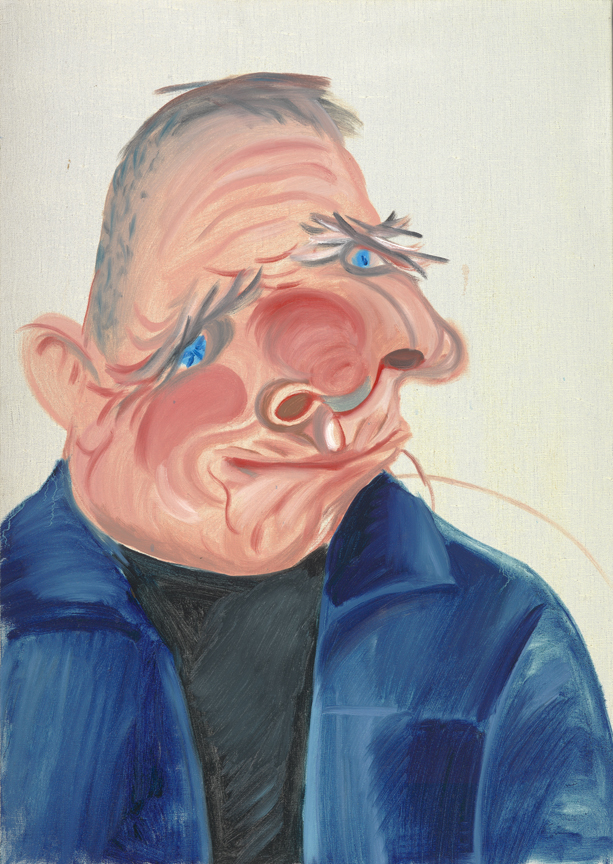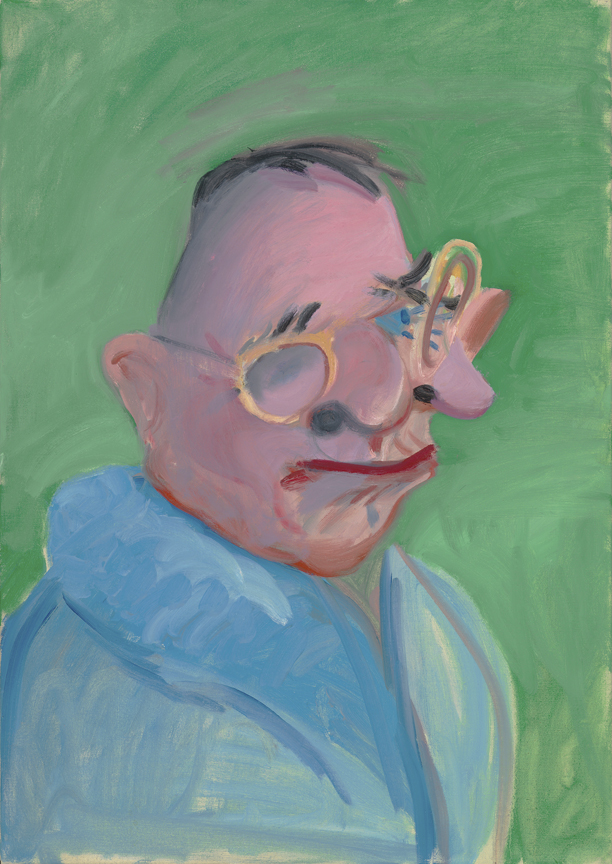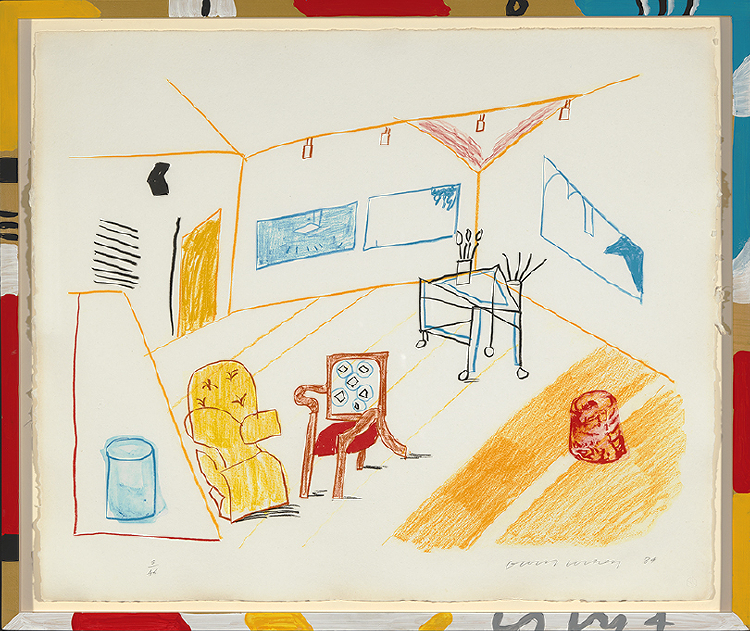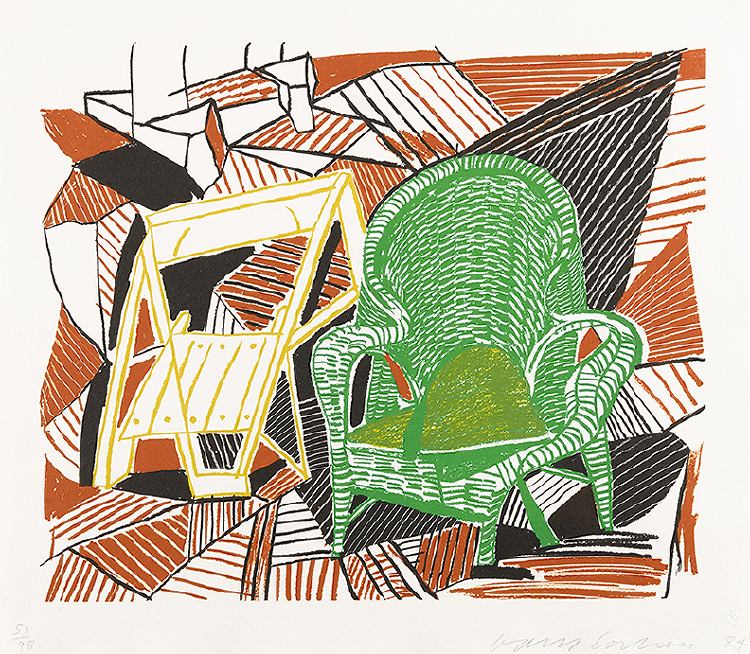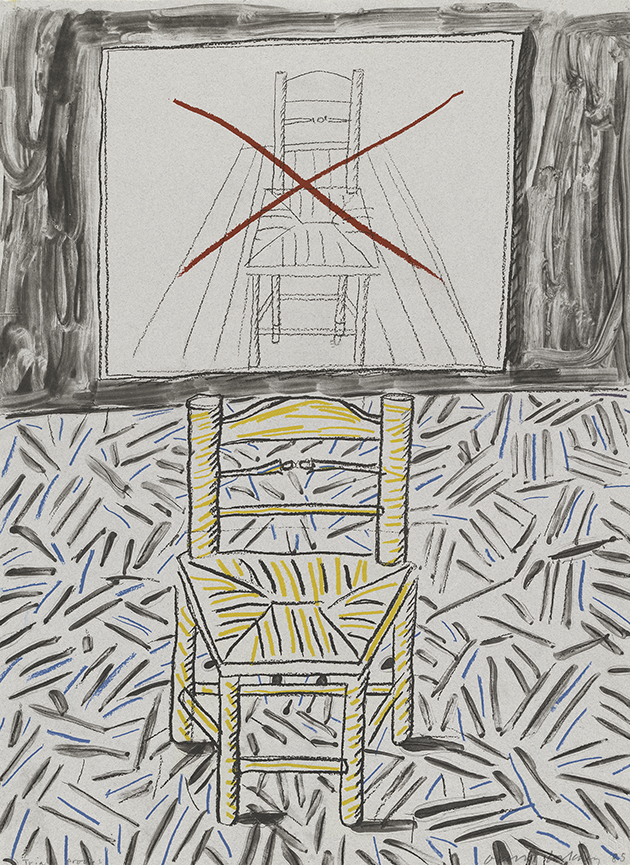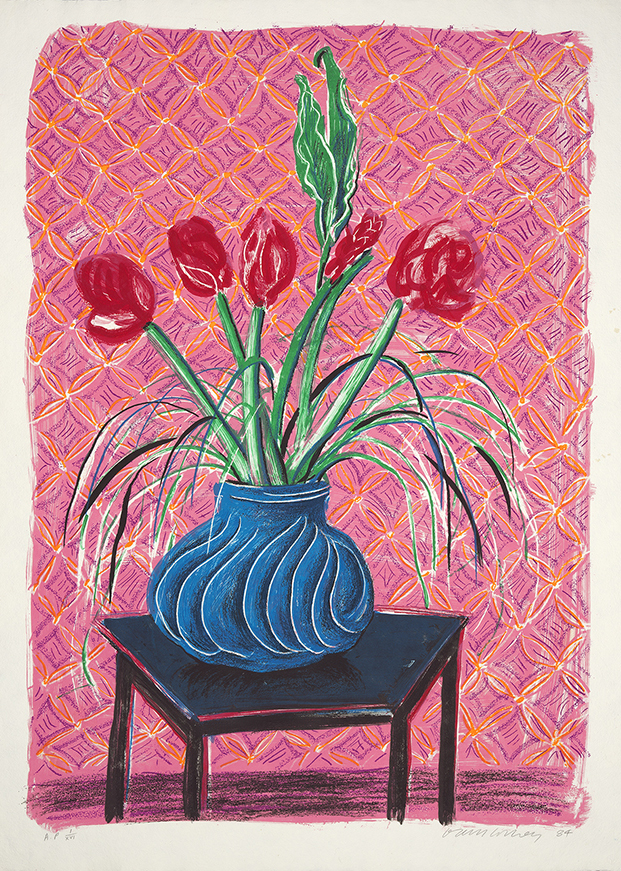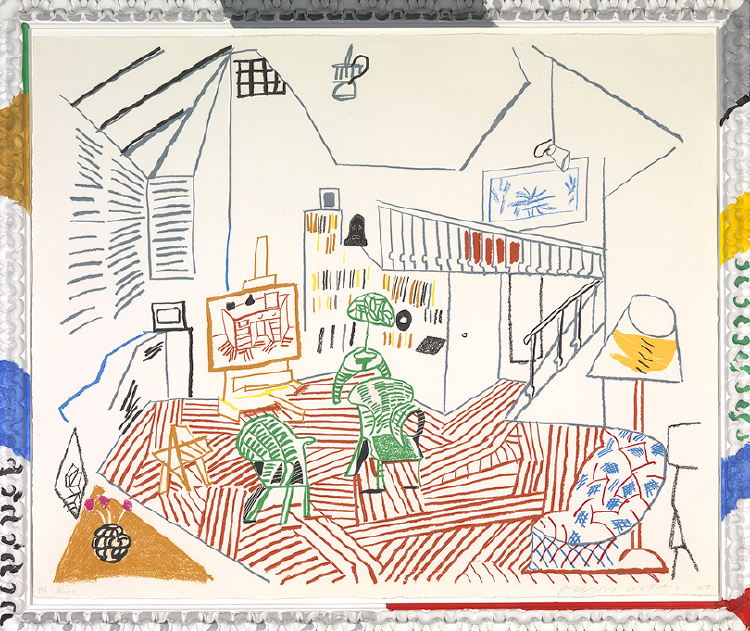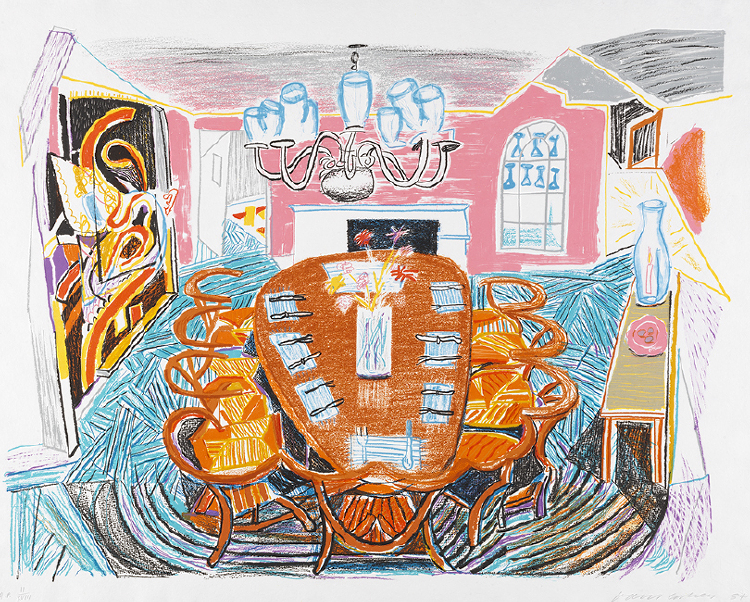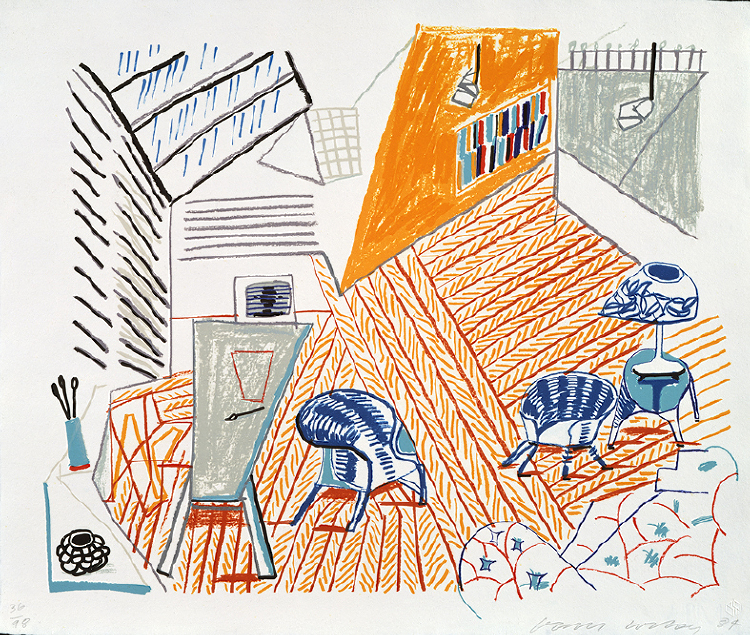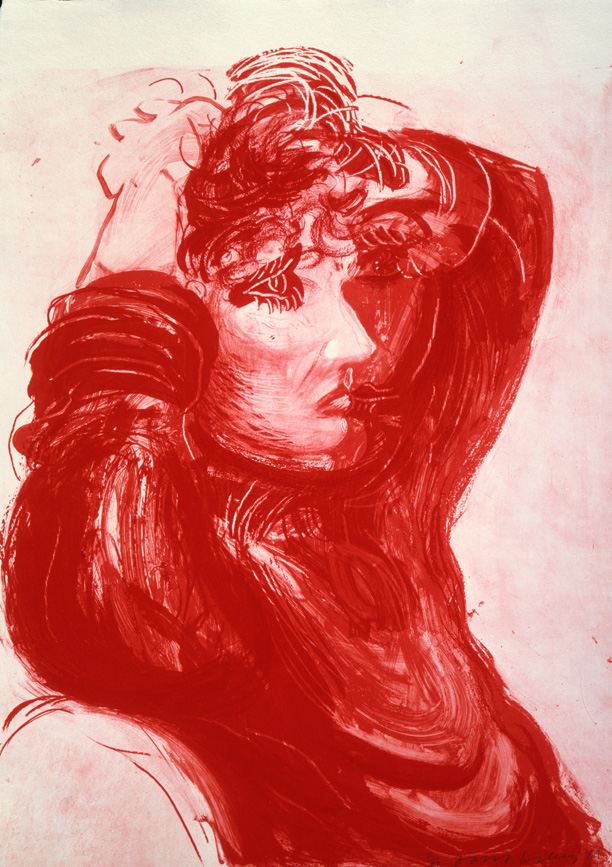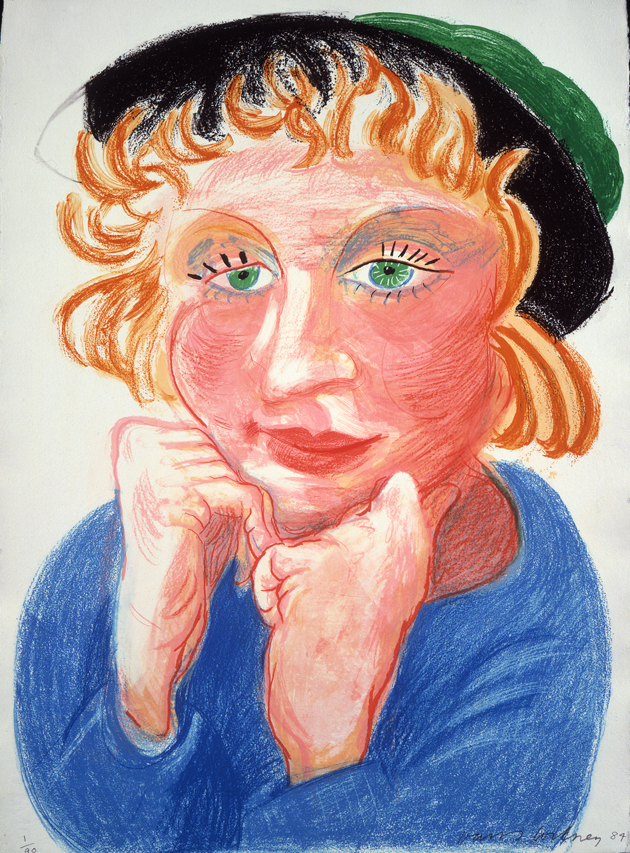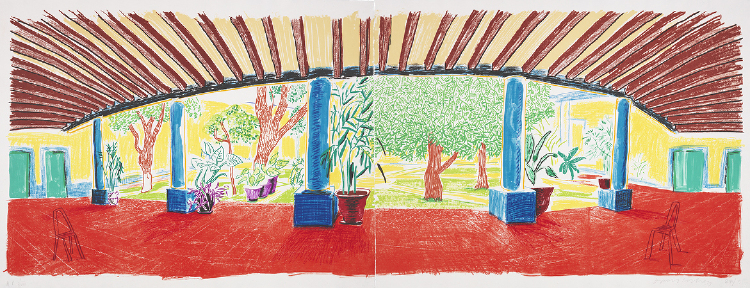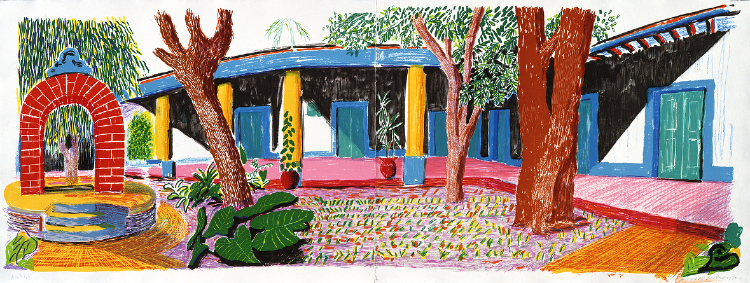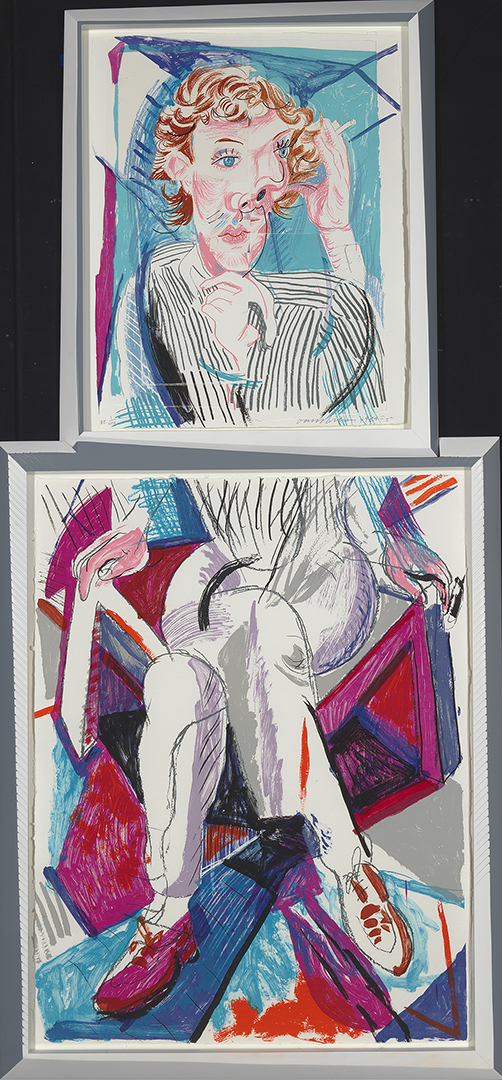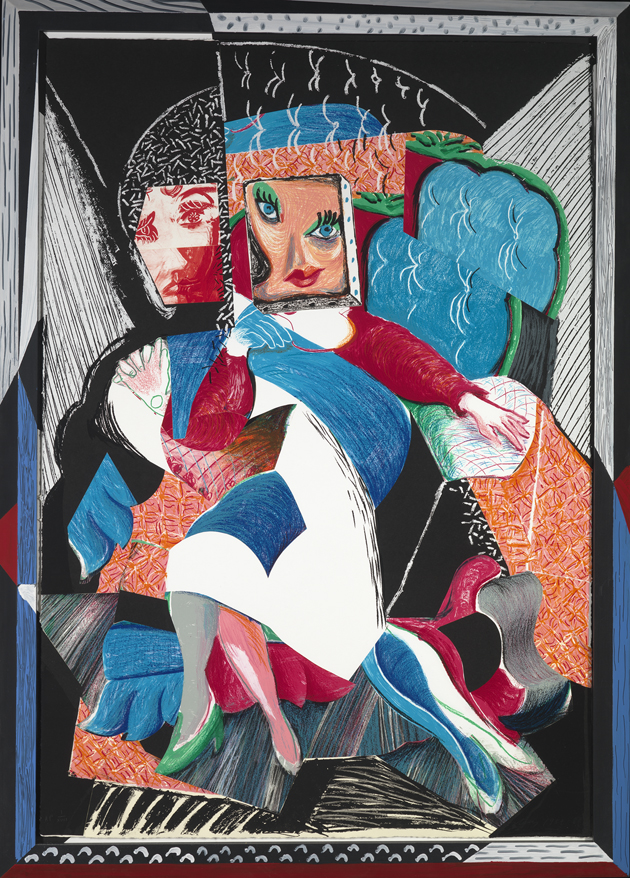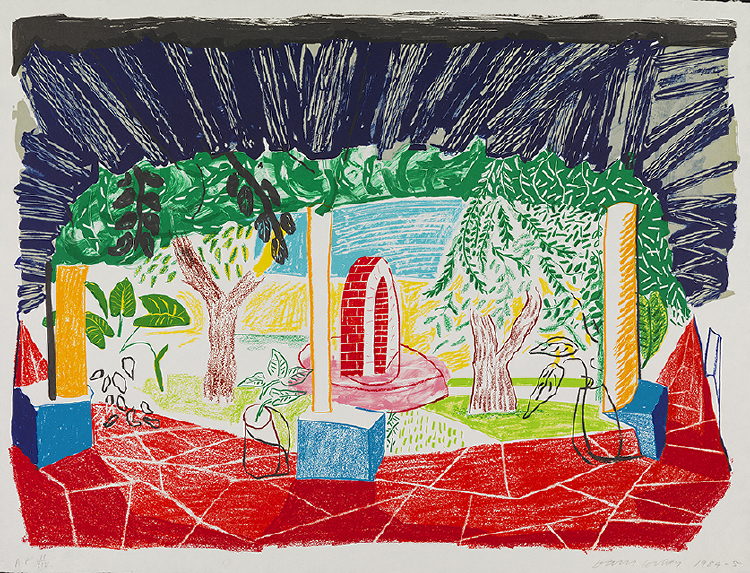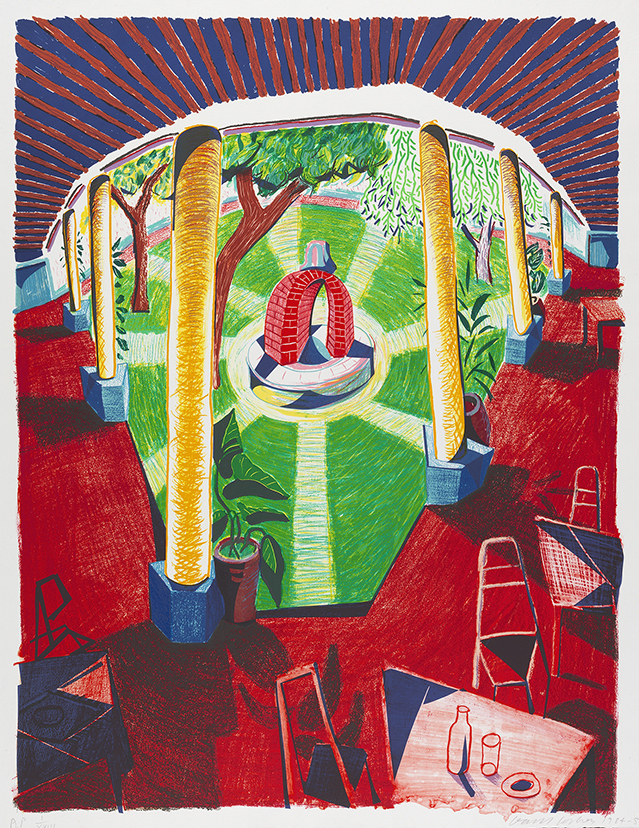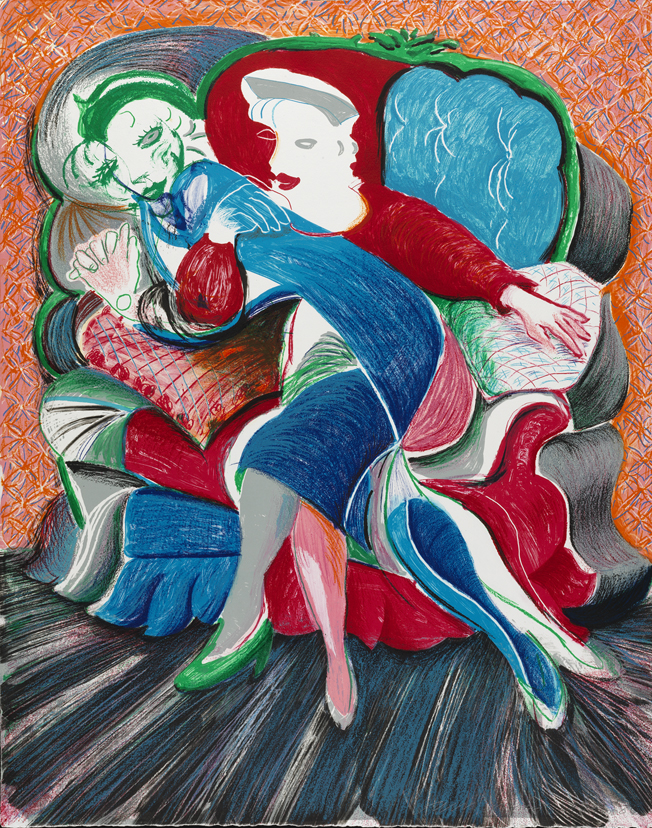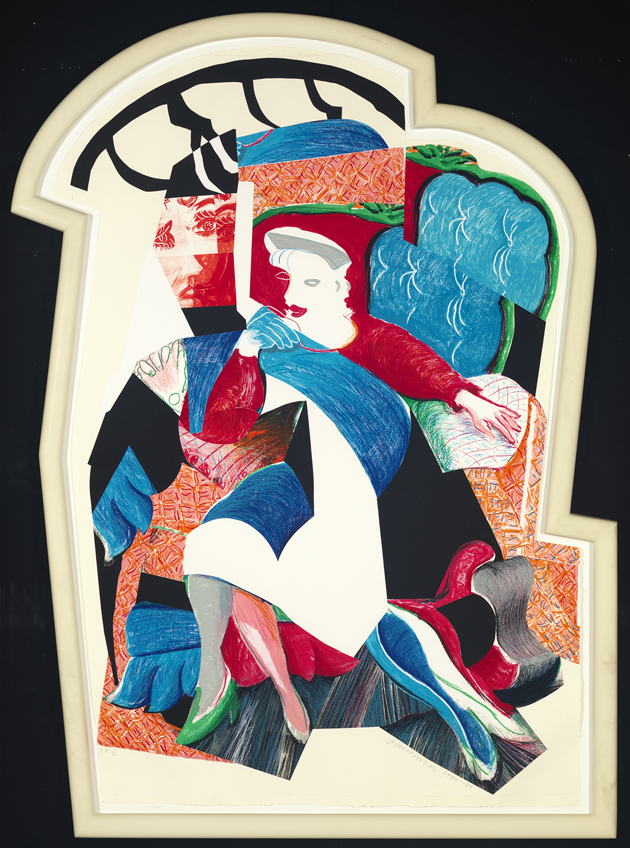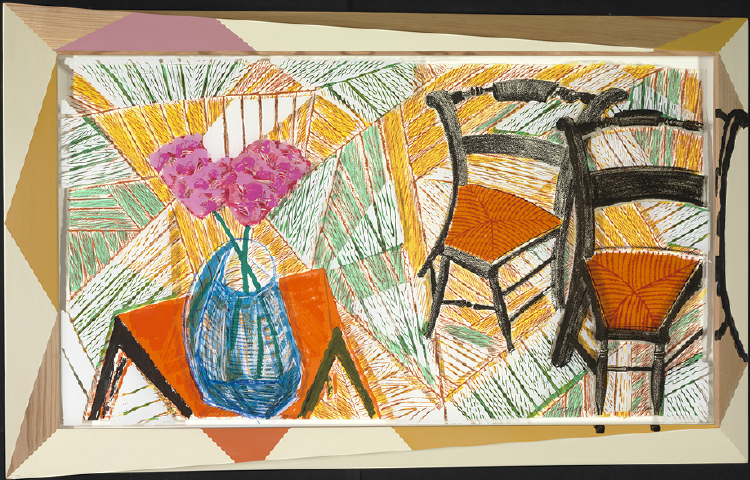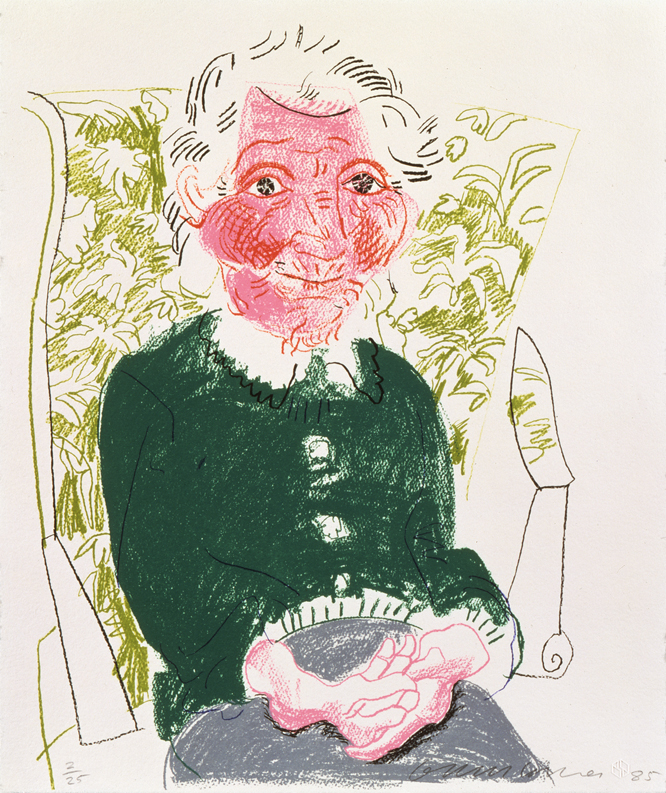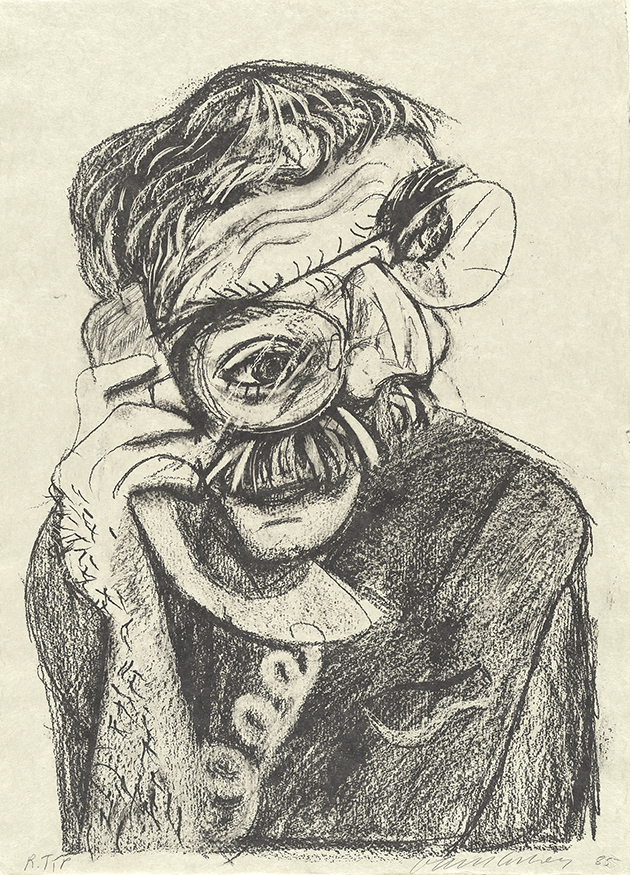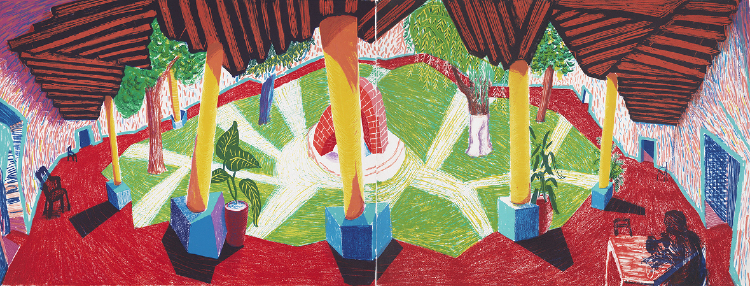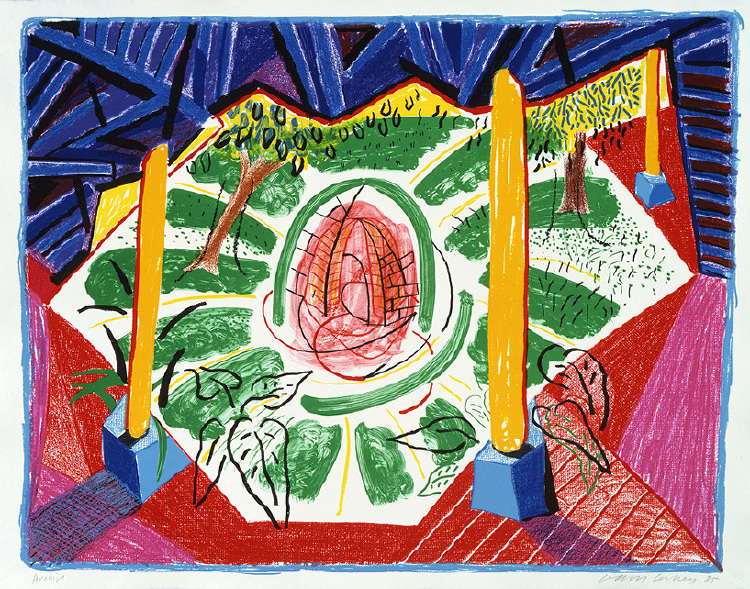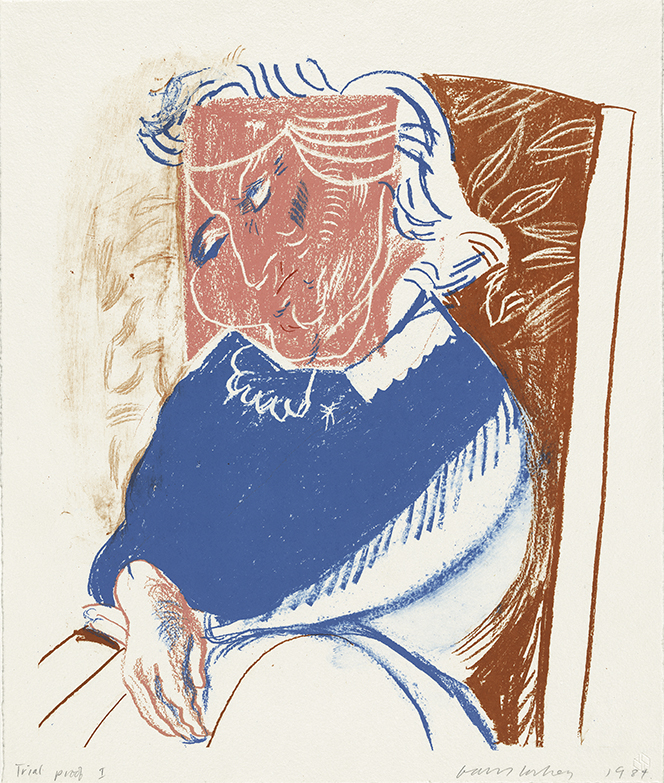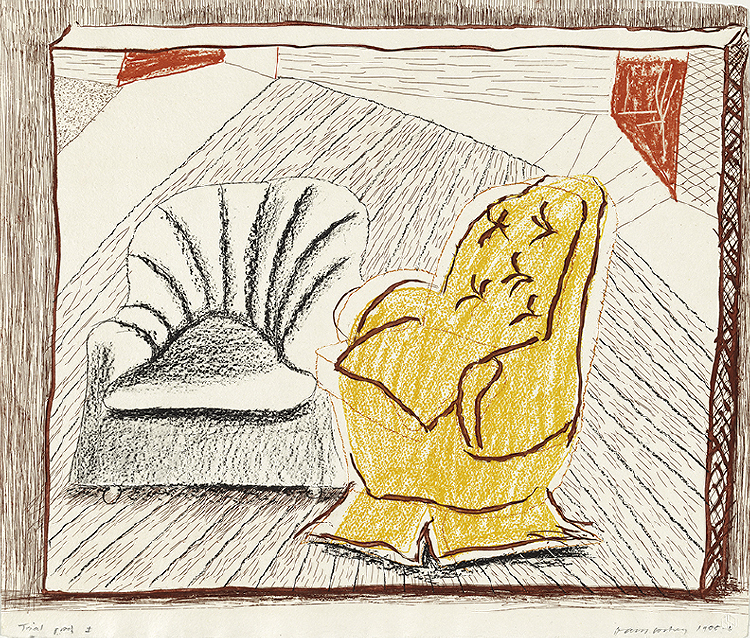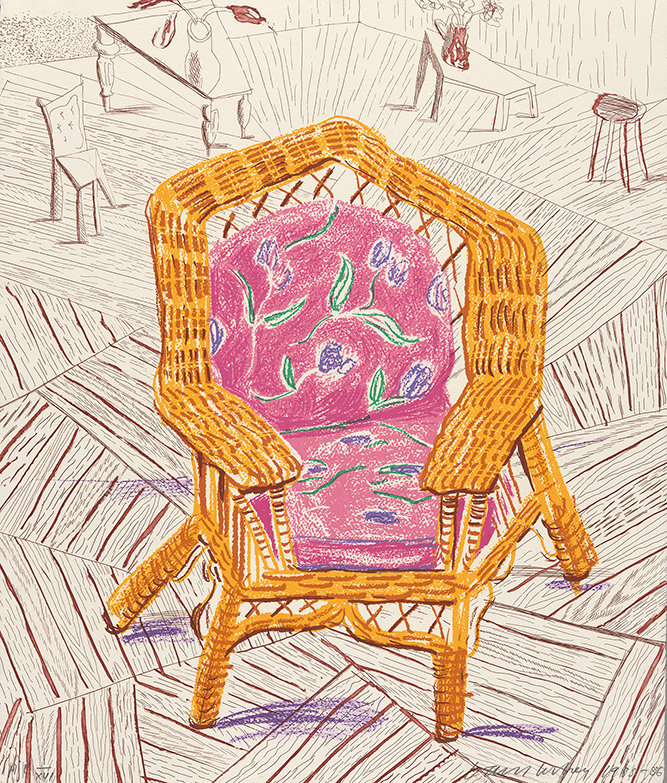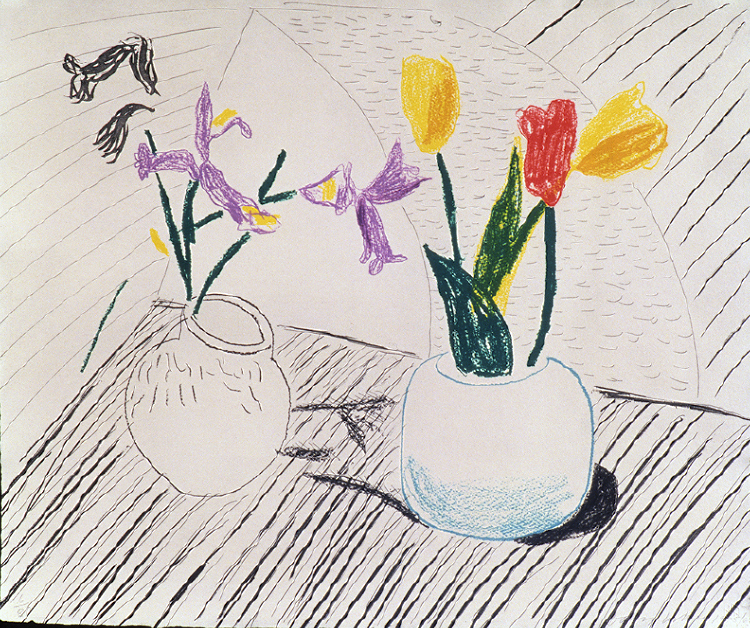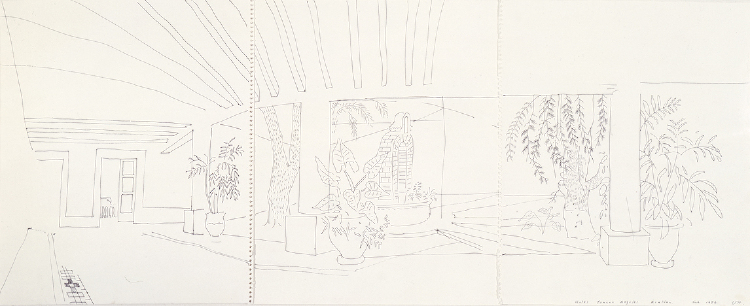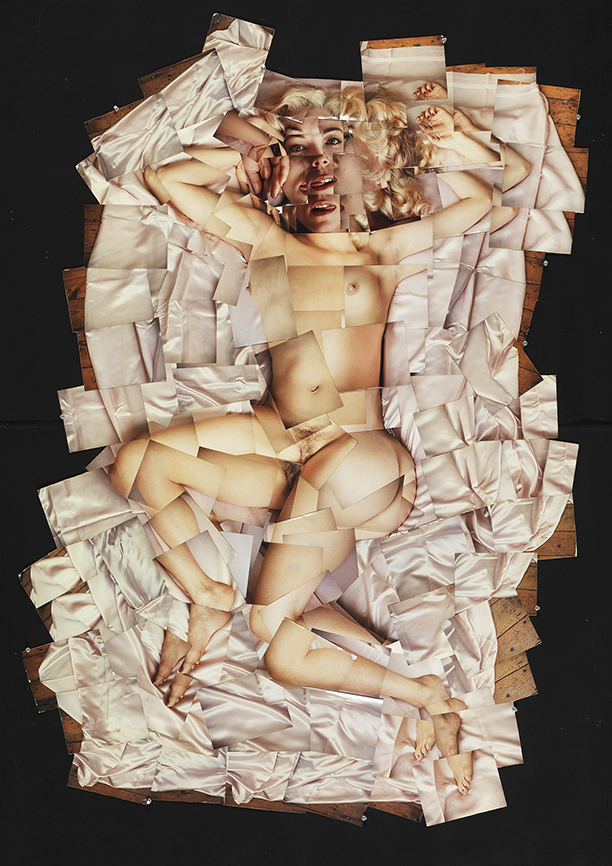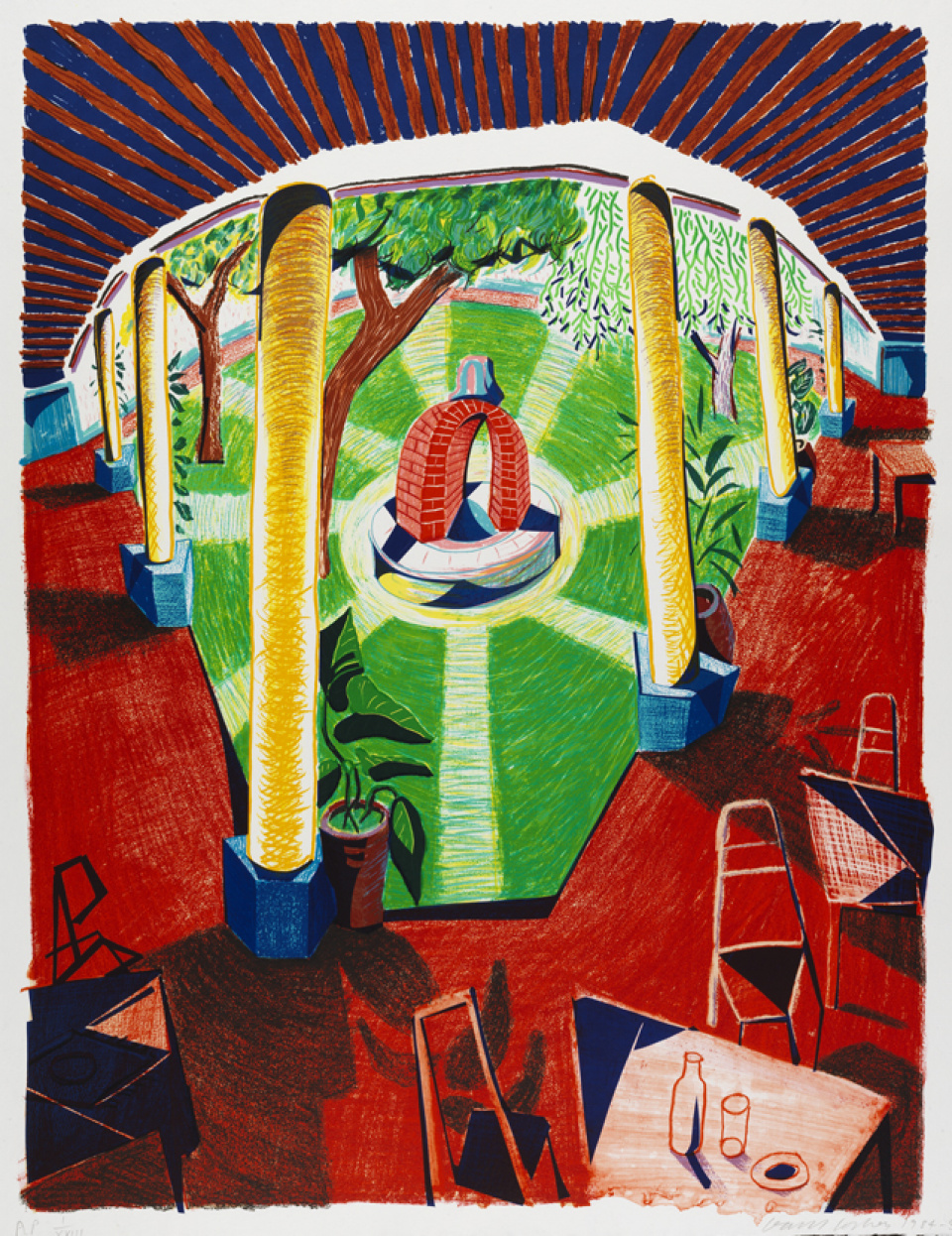
Christopher and Don
Hockney calls the vast canvas A Visit with Christopher and Don, Santa Monica Canyon—six feet high and twenty wide—“the most complicated painting I’ve ever done.” It attests to his study of Chinese scrolls, with nonlinear narratives playing out across expanses of two-dimensional space.
I was trying to create a painting where the viewer’s eye could be made to move in certain ways, stop in certain places, move on, and in so doing reconstruct the space across time for itself .... The problem was how to prevent the eye from stopping, from getting stuck. For instance, that’s why both Don and Christopher are rendered transparently. When you look at Christopher, you see him, but when you move along the bedroom and you’re looking at the bed, he dissolves in a sense into patterns of green and blue and red paint.
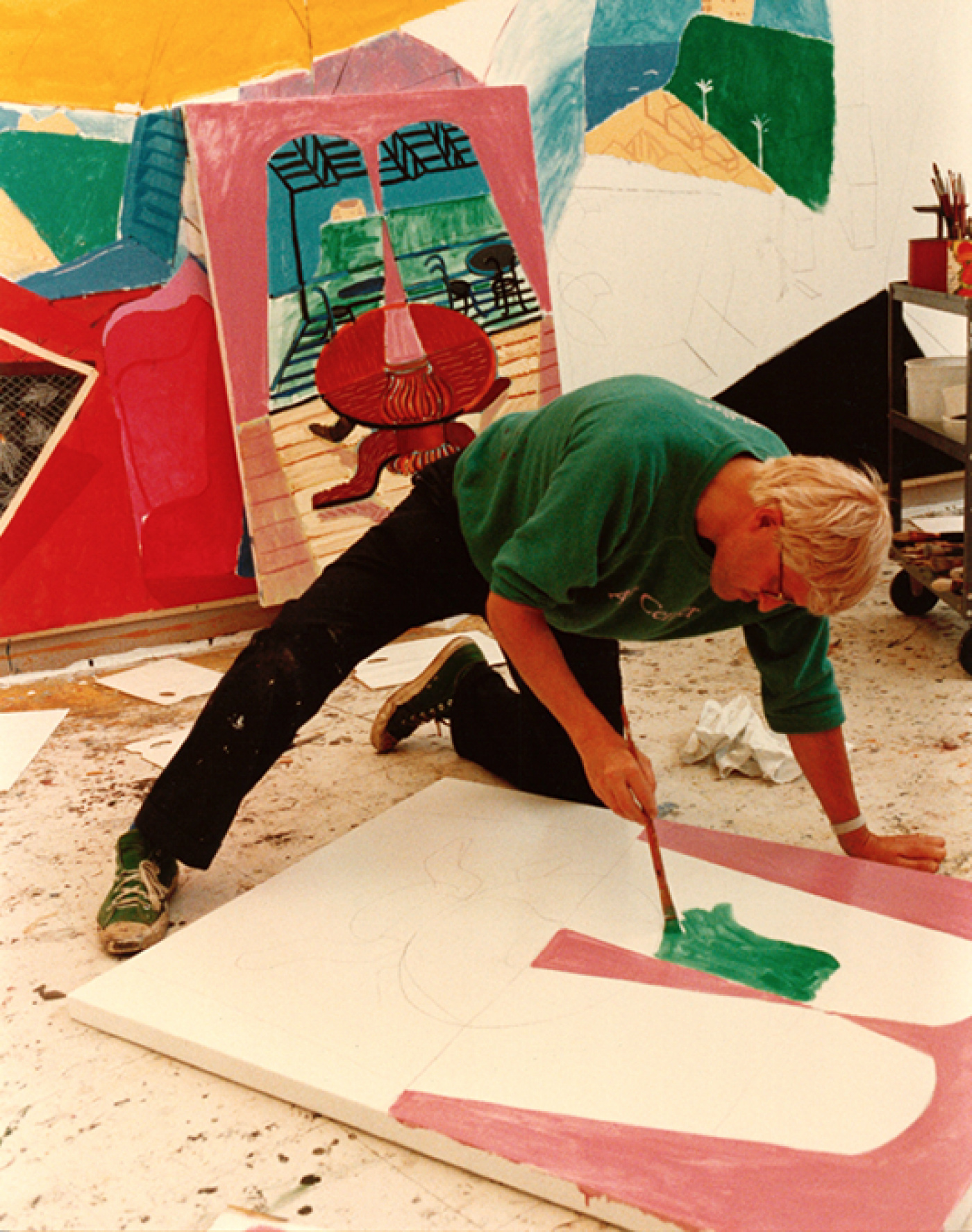
Painting in close-up
After his prolonged focus on theater design and photography in recent years, paintings are once more a significant portion in Hockney’s output. His fascination with Cubism, explored in his photographic collages, evolves into paintings of his friends and loved ones observed in extreme close-up.
Have you ever noticed how when you look at things close up, you sometimes shut one eye—that is, you make yourself like a camera? Otherwise, things start to swim .... The Cubists, you know, didn’t shut their eyes. People complain about Picasso—how he distorted the human face. I don’t think there are any distortions at all. For instance, those marvelous portraits of his lover Marie-Thérèse Walter which he made during the thirties—he must have spent hours with her in bed, very close, looking at her face. A face looked at like that does look different from one seen at five or six feet. Strange things begin to happen to the eyes, the cheeks, the nose—wonderful inversions and repetitions. Certain distortions appear, but they can’t be distortions, because they’re reality. Those paintings are about that kind of intimate seeing.
Hotel Acatlán
Hockney returns to paint the courtyard of the Hotel Romano Angeles in rural Mexico, which he discovered, to his delight, when his car broke down nearby earlier in the year. [NESTED]Filled with luxuriant plant life, it becomes the subject of a series of paintings he completes in his Los Angeles studio, as well as lithographs that he drafts on site using a new method introduced to him by the printer Ken Tyler, which involves layering transparent Mylar sheets to plan an image’s color registration.
I am now doing a painting of a courtyard of a Mexican hotel. I loved the space of it when I first discovered it, and went back to stay five days. It has so many different perspectives that you are forced to move your eye constantly over the surface of the canvas. It is a totally impossible view from one point, yet there is clarity and order about the picture. The effect of space is extremely strong, yet it is not an illusion you want to walk in to—because you are already in the picture and walking round—every viewer so far feels this. This is also the effect of seeming to soften the edges of the canvas—you are not looking through a hole .... Like the photographs, there is no way it can all be seen easily or at once, yet it is always recognizable as a courtyard. In short, the only way it can be seen all at once is as an abstraction, which is what it is, as are all things on a flat surface.
Nude, 17th June 1984
Hockey continues to advance his theories about how various modes of representation might be complicated through photography, for example by making a photocollage of the actress Theresa Russell playing Marilyn Monroe posing naked for a centerfold shot. Hockney divides Russell’s body up by taking myriad shots of it, then reassembles her full figure as Nude, 17th June 1984. [NESTED]This photographic collage was made after film director Nicolas Roeg approached Hockney about creating a work to feature in his film Insignificance (1985).
Only erotic photographs inspire you immediately to look for more than 30 seconds, and my pin-up requires you to look very slowly, you are forced to move over every inch of her body, which makes it more interesting, more erotic.
Exhibitions
Solo
- New Work, Richard Gray Gallery, Chicago, IL, USA (Sep 8–30).
- New Work: Paintings, Gouaches, Drawings, Photo Collages, André Emmerich Gallery, New York, NY, USA (Oct 13–Nov 3); catalogue.
Group
- The Folding Image: Screens by Western Artists of the Nineteenth and Twentieth Centuries, National Gallery of Art, Washington, D.C., USA (Mar 4–Sep 3), travels to Yale University Art Gallery (Oct 11, 1984–Jan 6, 1985); catalogue.
- Olympian Gestures, Los Angeles County Museum of Art, Los Angeles, CA, USA (Jun 7–Oct 7).
- American/European Painting, Drawing, and Sculpture, L.A. Louver, Venice, CA, USA (Jul 20–Aug 22).
Publications
Publications
- David Hockney—New Work: Paintings, Gouaches, Drawings and Photo Collages, André Emmerich Gallery, New York.
- David Hockney: Two Decades, Leslie Sacks Fine Art, Johannesburg, South Africa.
- El Gran Teatro De David Hockney, Museo Rufino Tamayo, Mexico City: Museo Rufino Tamayo, A.C..
- Cameraworks, by David Hockney, London: Thames & Hudson.

